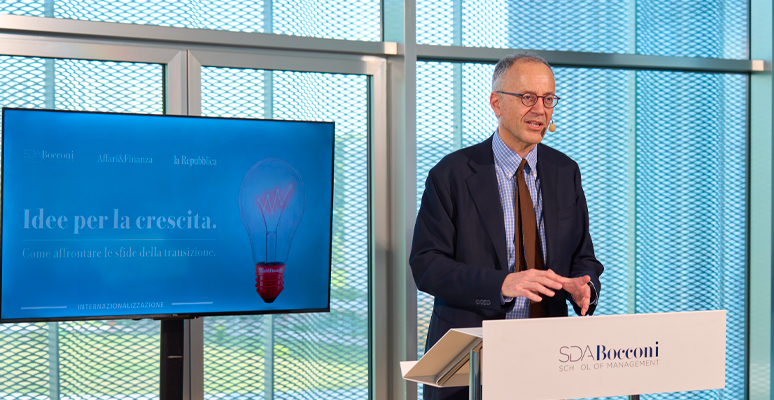Halting internationalization through “adventurous protectionist solutions” means shutting down a powerful engine of productivity growth for domestic firms, explained Gianmarco Ottaviano, Professor of Economics and Boroli Chair in European Studies at Bocconi University, during a talk in the “Idee per la Crescita” (Ideas for Growth) series organized by Affari&Finanza of la Repubblica and SDA Bocconi.
Exporting firms are, in fact, more productive, more innovative, and more profitable than others, because exposure to global competition helps reallocate productive resources toward more competitive activities.
“In today’s world, marked by new geopolitical tensions and increased discussions around economic self-sufficiency, the greatest risk is become insular and withdraw from competing on an international scale,” Ottaviano noted. “But globalization is not over—it is simply evolving. Strategic clarity is essential to navigate this transition with the right tools and a well-structured network of relationships.”
Professor Ottaviano outlined the four mechanisms that drive this increase in productivity—and the actions needed to make them work.
The discussion, moderated by la Repubblica’s deputy editor and head of Affari&Finanza, Walter Galbiati, featured contributions from Davide Vellani, Staff Corporate & Investment Banking of BPER Banca, and Roberto Giovannini, Partner, Head of Consumer Industrial Markets of KPMG.
The full talk is available (in Italian) in streaming on the Repubblica website:
https://www.repubblica.it/dossier/economia/affari-e-finanza-idee-per-la-crescita/








